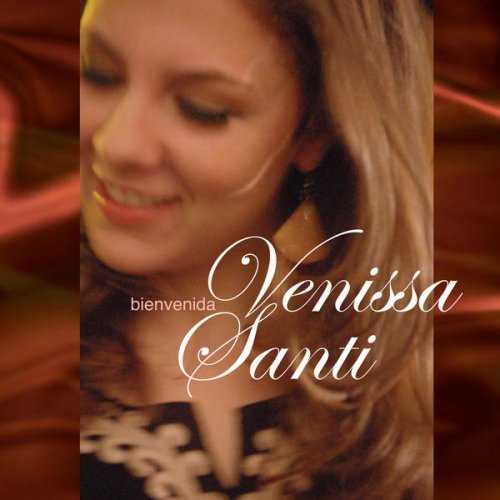Sofia Gubaidulina, Basque National Orchestra, José Ramón Encinar - Kadenza / Seven Words / Et exspecto (2011)

Artist: Sofia Gubaidulina, Basque National Orchestra, José Ramón Encinar
Title: Kadenza / Seven Words / Et exspecto
Year Of Release: 2011
Label: Etcetera
Genre: Classical, contemporary
Quality: FLAC (image+.cue,log,scans)
Total Time: 73:05
Total Size: 328 MB
WebSite: Album Preview
Tracklist:Title: Kadenza / Seven Words / Et exspecto
Year Of Release: 2011
Label: Etcetera
Genre: Classical, contemporary
Quality: FLAC (image+.cue,log,scans)
Total Time: 73:05
Total Size: 328 MB
WebSite: Album Preview
01. Seven Words - I. Father, forgive them... (4:07)
02. Seven Words - II. Woman, behold thy son! (4:02)
03. Seven Words - III. Verily I say unto thee... (4:05)
04. Seven Words - IV. My God, my God... (8:39)
05. Seven Words - V. I thirst (5:02)
06. Seven Words - VI. It is finished (2:37)
07. Seven Words - VII. Father, into thy hands... (3:40)
08. In croce (14:37)
09. Kadenza (7:49)
10. Et exspecto (18:26)
“Sieben Worte”, the seven last words of Jesus on the cross, are like the seven states of a lamentation that leads from suffering to redemption. The specific symbolic features of Sieben Worte, apart from the number seven itself, are the cross and the crucifixion. The first three words explore the more human side of Jesus Christ: he calls for the salvation of others, and, worried about what will happen to his mother after his death, presents St John to her as her son, and forgives those who were crucifying him. This all culminates in the fourth word, when Jesus Christ cries out “My God, my God, why have your forsaken me?”. This becomes the heart of the work, both numerically and by its weight and duration. In the last section, in addition to the natural and artificial harmonics, we can also hear a resource created by the cellist Vladimir Tonka to make the sounds that Gubaidulina wanted and to interpret the idea of the crucifixion: the ‘flirrende Akkorde’.
The fifth movement, “I thirst”, is dedicated to the crucifixion with the sound of the bayan, and it prepares the dramatic climax of the death of Jesus Christ in the sixth word, which begins with the apparent difficulty in breathing of the accordion. Then whilst the orchestra displays a clear melodic line, the accordion appears to be screaming and the cello ‘crucifies’ its fourth string. At the end of the sixth word the cello bow moves towards the bridge and the sound becomes progressively more eerie. The bow and the body of the instrument make a cross shape, thus portraying the crucifixion. In the seventh word, the bow exceeds the limits of the instrument, playing on the other side of the bridge, whilst the player uses his left hand to play harp-like harmonics. Finally, the voice of the cello is the only voice that can be heard, as if waiting patiently for salvation.
The second work, “In Croce”, has been edited several times between 1979 and 1991. The version you hear on this disc is closely linked to the ‘Sieben Worte’ in terms of instrumentation, and both works are linked by the symbol of the cross, which is central to the essence of “In Croce”, and is shown in the contrast in timbres of the various instruments, in the crossing of registers, the juxtaposition of glissandi natural harmonics and in the chromatic modulations. This version turns “In Croce” into an obsessive chant, whose novel interpretations of tempi and tessitura, the result of a solid collaboration between Gubaidulina, Polo and Alberdi, broaden and extend the work whilst they portray the symbol of the cross with their sound.
The fifth movement, “I thirst”, is dedicated to the crucifixion with the sound of the bayan, and it prepares the dramatic climax of the death of Jesus Christ in the sixth word, which begins with the apparent difficulty in breathing of the accordion. Then whilst the orchestra displays a clear melodic line, the accordion appears to be screaming and the cello ‘crucifies’ its fourth string. At the end of the sixth word the cello bow moves towards the bridge and the sound becomes progressively more eerie. The bow and the body of the instrument make a cross shape, thus portraying the crucifixion. In the seventh word, the bow exceeds the limits of the instrument, playing on the other side of the bridge, whilst the player uses his left hand to play harp-like harmonics. Finally, the voice of the cello is the only voice that can be heard, as if waiting patiently for salvation.
The second work, “In Croce”, has been edited several times between 1979 and 1991. The version you hear on this disc is closely linked to the ‘Sieben Worte’ in terms of instrumentation, and both works are linked by the symbol of the cross, which is central to the essence of “In Croce”, and is shown in the contrast in timbres of the various instruments, in the crossing of registers, the juxtaposition of glissandi natural harmonics and in the chromatic modulations. This version turns “In Croce” into an obsessive chant, whose novel interpretations of tempi and tessitura, the result of a solid collaboration between Gubaidulina, Polo and Alberdi, broaden and extend the work whilst they portray the symbol of the cross with their sound.

![NYO Jazz - Live in Johannesburg (Live) (2025) [Hi-Res] NYO Jazz - Live in Johannesburg (Live) (2025) [Hi-Res]](https://www.dibpic.com/uploads/posts/2025-12/1765894703_zwp14vk90corb_600.jpg)

![Luizinho do Jêje, Marcelo Galter, Sylvio Fraga - Mocofaia (2024) [Hi-Res] Luizinho do Jêje, Marcelo Galter, Sylvio Fraga - Mocofaia (2024) [Hi-Res]](https://img.israbox.com/img/2025-12/19/ie15pqye9f7axu0oyf0ndsk7k.jpg)
![Dave Holland - Emerald Tears (1977/2025) [Hi-Res] Dave Holland - Emerald Tears (1977/2025) [Hi-Res]](https://www.dibpic.com/uploads/posts/2025-12/1765891427_cover.jpg)



![Eshon Burgundy - Safe Place (Bossa Nova Jazz) (2025) [Hi-Res] Eshon Burgundy - Safe Place (Bossa Nova Jazz) (2025) [Hi-Res]](https://www.dibpic.com/uploads/posts/2025-12/1766079194_cover.jpg)
